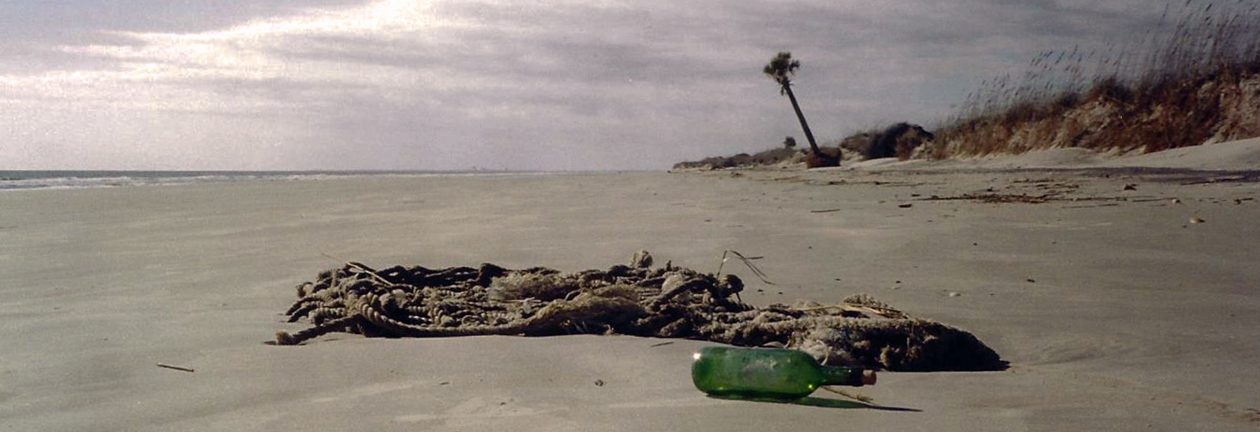THIRTY-FIRST MOVEMENT: SERBIA
Belgrade, Serbia
I woke up just short of 06:00 on my bed, in the train, while enroute to Timișoara, Romania. At 06:45, I got out of bed, packed my bags, and got ready to arrive at the station. The train finally reached the station at 07:32. I exited the train and walked to the two-car, modern train on the adjacent platform (numeral uno) that was bound for Vršac, Serbia. I found a seat and then waited for the train to depart at 07:50. Once underway, the train stopped several times before reaching the Romanian border checkpoint at 09:10. At the checkpoint, the passengers’ passports were collected and bags were randomly checked. Our passports then returned with the Romanian exit stamps and the train continued on to Serbia, heading south, at 09:32.
At 09:58, the train reached the Serbia border checkpoint at Vršac, our passports were collected again, bags were randomly checked again, and we waited in the train until receiving our passports, with Serbian entry stamps, at 10:16. We then were allowed to depart the train and board the three-car passenger train that was to take us the rest of the way to Belgrade (or so we all thought). At 10:45, this train departed Vršac and took us westward toward Belgrade. The train reached Pančevo at 11:58 (actually, it was 10:58 since Serbia is an hour behind Romania – hooray, I gained an hour!) and it turned out that this was our final stop . . . a bit shy of Belgrade (I was told later that the trains from Romania don’t go all the way to Belgrade like the rest and that this was normal). We then departed the train and I ended up with a group of two Serbian women, a woman from Montenegro, a South Korean couple, and three Indian women; we then loaded on to a minivan that drove us to Belgrade at the cost of one Euro each. Once in Belgrade, the woman from Montenegro and the two Serbian women helped us (non-natives) find our ways. I loaded on to a bus with the Montenegro woman, one of the Serbian women, and the Korean couple, which took us near Republic Square (I had asked how much the bus ride costs, but was told it was free . . . for foreigners . . . and not to worry about it – whatever; when in Belgrade . . . I guess). The woman from Montenegro then told the Korean couple and I when to get off (since we were all planning on staying in the central area, near Republic Square), we thanked her for all her help, and then did as directed. Once off the bus, I got my bearings (thanks to the Korean guy and his GPS) and I then walked through drizzling rain to the hostel I wished to stay at, near Studentski Park.
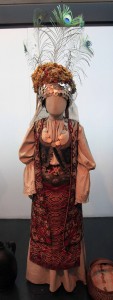
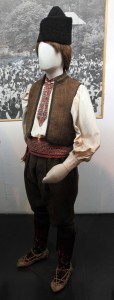

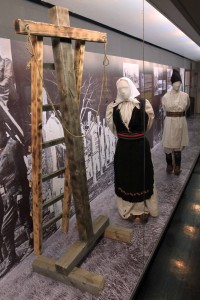
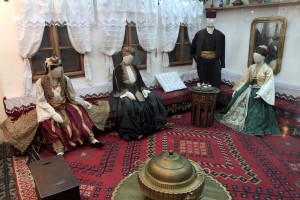
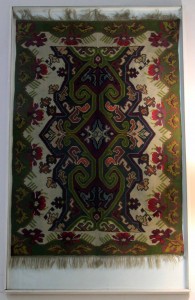
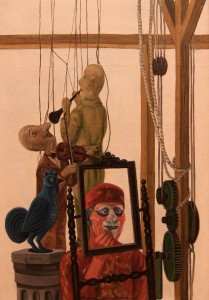
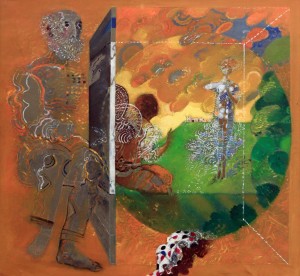
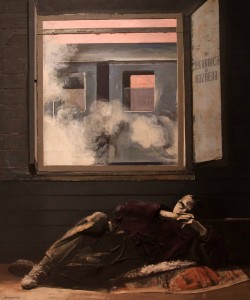
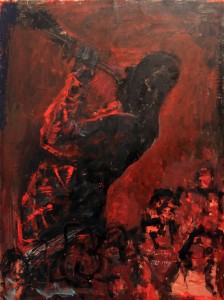
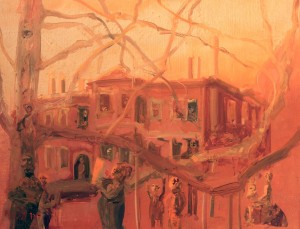
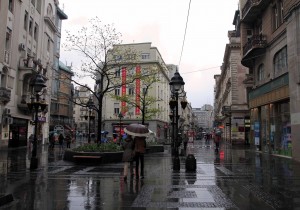
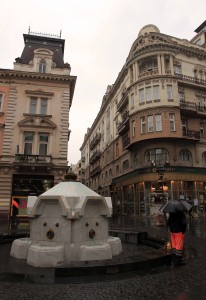
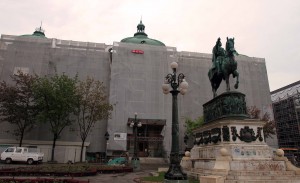
I found the hostel, checked in, took a much needed shower, and turned in my nasty, disgusting, dirty clothes to be washed and dried. Once that business was taken care of, I grabbed my camera and walked outside to see a couple of museums – in order to make the most out of today. I first walked to the Ethnographic Museum (close to the hostel, next to Studentski Park), paid the entrance fee, and then looked at all the exhibits inside, on each of its three levels. The first floor showcased traditional clothing from the Yugoslavian region (i.e. Croatia, Bosnia, Montenegro, Serbia, Slovenia), mostly from the late nineteenth-century AD. The second floor had several kilim rugs manufactured in the town of Pirot, as well as a special exhibit on the Great War (it is, after all, the centennial of that deadly conflict) and its terrible consequences on Serbia (this section had some graphic photographs of men and women executed by hangings (or, more precisely, by being suspended and then garotted from behind, which was much more painful and lasted longer than a traditional hanging). The third floor had exhibitions displaying traditional styles of houses, farming tools and equipment, pottery, viticulture tools and equipment, furniture, and more modern clothes. After exploring the Ethnographic Museum in its entirety, I exited the building and walked to the Zepter Museum, which is an art museum that opened recently (in 2010 AD) and that displays Serbian artwork created in the latter-half of the twentieth- century, as well as the twenty-first century AD. I’m not much of a fan of modern art and I didn’t think I would care for much inside this building, but I was pleasantly surprised to see a number of creative artworks painted by TALENTED PEOPLE – UNLIKE MOST MODERN ARTISTS (sorry, I must’ve accidently pressed the caps lock key). Anyway, I enjoyed this museum and its contents. After viewing all the pieces of art, I walked outside, to Kneza Mihaila (the pedestrian street, closed to vehicle traffic) and walked up and down in the rain; I also visited Republic Square and saw the Monument of Knez Mihailo in front of the National Museum (which, unfortunately, is being renovated and not open at the time). I then decided to eat dinner (a bit early, before 17:00) and found a café where I had fusilli con salmon (salmon, zucchini, cherry tomatoes, sour cream, and fusilli noodles), a Caesar salad (chicken, bacon, croutons, salad mix, tomatoes, Sicilian capers, and Caesar dressing), and Serbian beer. After dinner, I returned to the hostel, updated the website (somewhat . . . at least the photographs), and relaxed. While in the dormitory room, I received half of my laundry (nice and clean) and I packed it away. I then went down to the common room and met two American guys (one from New York and the other from California) who participated in an ice hockey tournament in Slovenia and are now traveling around together in Eastern Europe for two weeks. Wjile in the common room, the lady working reception in the evening came downstairs and gave everyone in the common room a shot of rakia (a fruit brandy popular in Serbia – this particular rakia was from honey); we all took the rakia like a shot, but later found out (during a pub crawl) that one is supposed to sip rakia, not down it all at once). Later on, at 20:45, the two American guys and I left the hostel and walked to Republic Square for the Belgrade Pub Crawl at 21:00. We reached the meeting point and met our guide, another American (a Chicagonite), two older British women, a German (from Hamburg), a New Zealand man, an Aussie man, and an Aussie gal (with Ukrainian lineage). We started our tour shortly after 21:00 and walked to our first bar (that had its name in Cyrillic and I have no idea what it would be called in English); inside the first bar, we were all given a tasty shot with red and green liquid, divided; we then had a choice of beer, wine, or rakia – I chose wine (a dry white Serbian wine that tasted of oranges, lemons, and flowers. After finishing our drinks at the first pub, we walked to the second (another one immersed in the Cyrillic alphabet); inside this pub, I had a shot of apricot rakia and a beer; there were also three folk singers with two guitars and an accordion playing very loud, traditional Serbian songs. After completing our drinks in this pub, we walked to the third one, named the Maniac Pub and located inside one of the underground street crossings in Belgrade; this bar played excellent music (mostly Classic Rock), which the Aussie gal and I appreciated; inside the bar, I had a beer and another shot of rakia. Once we finished our drinks at this bar, we walked to our final destination: Peron Savamala Club. Once in the club, we all proceeded to drink beer and dance to the loud, pulsing music. We stayed there for quite some time and I had hoped to join the two American hockey players and their Indian friend to an after party for some fashion festival, but at some point I lost the two Americans in the crowded club. I did spend most of the time talking with the three from down under; however, at 03:00, the Aussie gal told me she was very drunk and after I had asked her if she wanted to return to her hostel, she replied yes; so I walked out of the club with her and we took a taxi cab to Republic Square. From the square, we walked to the Bohemian Quarter; from there, she directed me toward her hostel. Once we found the hostel, we pressed the buzzer, and the door open; she then thanked me for escorting her back and she kissed me goodbye several times; I told her she was very kind, thanked her, and said goodbye. I then found my way back to the hostel I was staying at and went to sleep at 04:00. It would’ve been nice to talk to the Aussie gal again – preferably while we were both sober -, but it was not meant to be.
